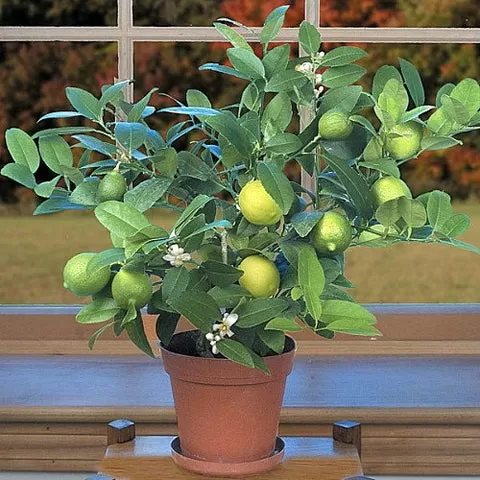- Discover the secrets to successfully growing vibrant lime trees in pots, no matter your space.
- Learn essential tips for sunlight, watering, feeding, and even pollination for indoor lime trees.
- Explore the unique characteristics and care requirements of Key Lime trees.
- Unleash the culinary potential of fresh limes, from zesty cocktails to tangy desserts.
Imagine the aroma of fresh limes permeating your home, ready to be plucked and used in your favorite recipes. Growing Lime Trees In Pots offers a rewarding experience, bringing the taste of the tropics to any space. This guide focuses on successfully growing lime trees in pots, empowering you to cultivate these vibrant citrus gems regardless of your location. Let’s dive into the world of potted lime trees and unlock the secrets to their thriving growth.
Contents
- Choosing the Right Lime Tree for Your Pot
- Key Lime Tree (Citrus aurantiifolia)
- Essential Care Tips for Potted Lime Trees
- Sunlight Requirements
- Watering Wisdom
- Feeding Your Lime Tree
- Pollination for Indoor Lime Trees
- Troubleshooting Common Problems
- Harvesting and Enjoying Your Limes
- Conclusion: From Seed to Zest
Choosing the Right Lime Tree for Your Pot
While several varieties of lime trees can thrive in containers, the Key Lime is a standout choice for its compact size and abundant fruit production.
Key Lime Tree (Citrus aurantiifolia)
- Common Name: Key Lime
- Scientific Name: Citrus aurantiifolia
- Zones: 9-11
- Light: Full sun (at least 6-8 hours)
- Humidity: High
- Water: Regularly, allowing soil to dry slightly between waterings
Key Limes, also known as Mexican limes, are renowned for their distinctive tart flavor, perfect for Key Lime pie and other culinary delights. Their small stature makes them ideally suited for container gardening, even producing fruit when just two feet tall.
Essential Care Tips for Potted Lime Trees
Providing the right balance of sunlight, water, and nutrients is crucial for the health and productivity of your potted lime tree.
Sunlight Requirements
Lime trees crave sunlight. Aim for at least 6-8 hours of direct sunlight daily. A south-facing window or patio is ideal. If natural light is limited, supplement with a full-spectrum grow light.
Watering Wisdom
Proper watering is essential. Allow the top two inches of soil to dry out between waterings. Use a well-draining potting mix to prevent root rot. Increase humidity around the tree by misting the leaves regularly, especially during dry winter months.
Feeding Your Lime Tree
Regular fertilization is key, especially for potted trees. Use a citrus-specific fertilizer during the growing season (spring and summer), following the package instructions.
Pollination for Indoor Lime Trees
While lime trees are self-fertile, indoor environments can sometimes hinder natural pollination. You can assist by gently brushing a small paintbrush or cotton swab from flower to flower, transferring pollen.
Refreshing lemonade made with homegrown Meyer lemons.
Troubleshooting Common Problems
Yellowing leaves can indicate overwatering or nutrient deficiency. Adjust your watering schedule and consider using a fertilizer specifically formulated for citrus trees.
Harvesting and Enjoying Your Limes
With proper care, your potted lime tree will reward you with fragrant blossoms and an abundance of juicy limes. Harvest the fruits when they reach a vibrant green color and feel slightly firm to the touch.
Conclusion: From Seed to Zest
Growing lime trees in pots is a fulfilling journey, culminating in the joy of harvesting your own fresh citrus. By following these essential care tips and addressing potential challenges, you can enjoy a bountiful harvest and the satisfaction of cultivating your own piece of the tropics. Share your experiences and tips in the comments below, and let us know how your potted lime trees are thriving! Explore The Little Garden for more inspiring gardening advice and discover a world of possibilities for your green space.
A delicious Key Lime pie, a testament to the rewards of growing your own limes.

